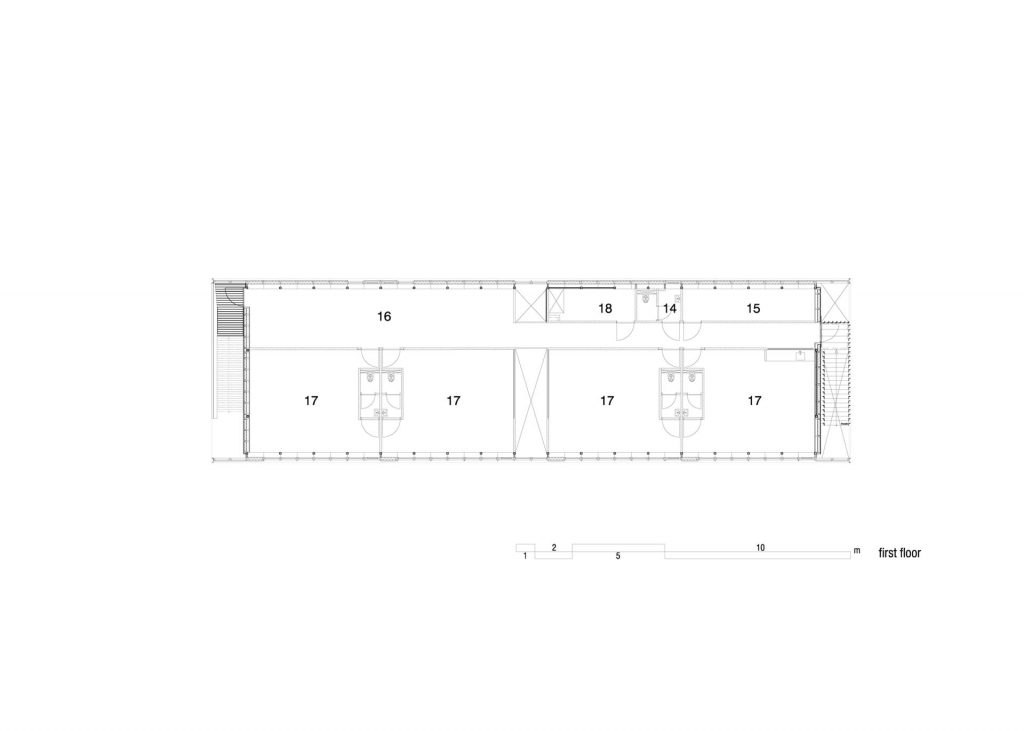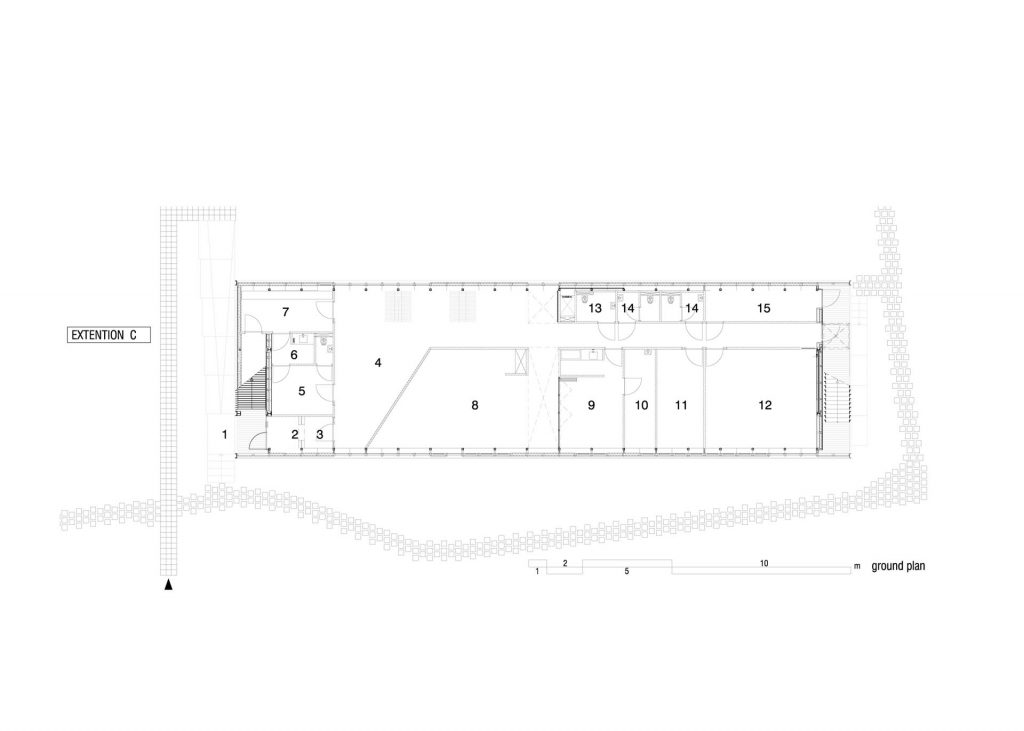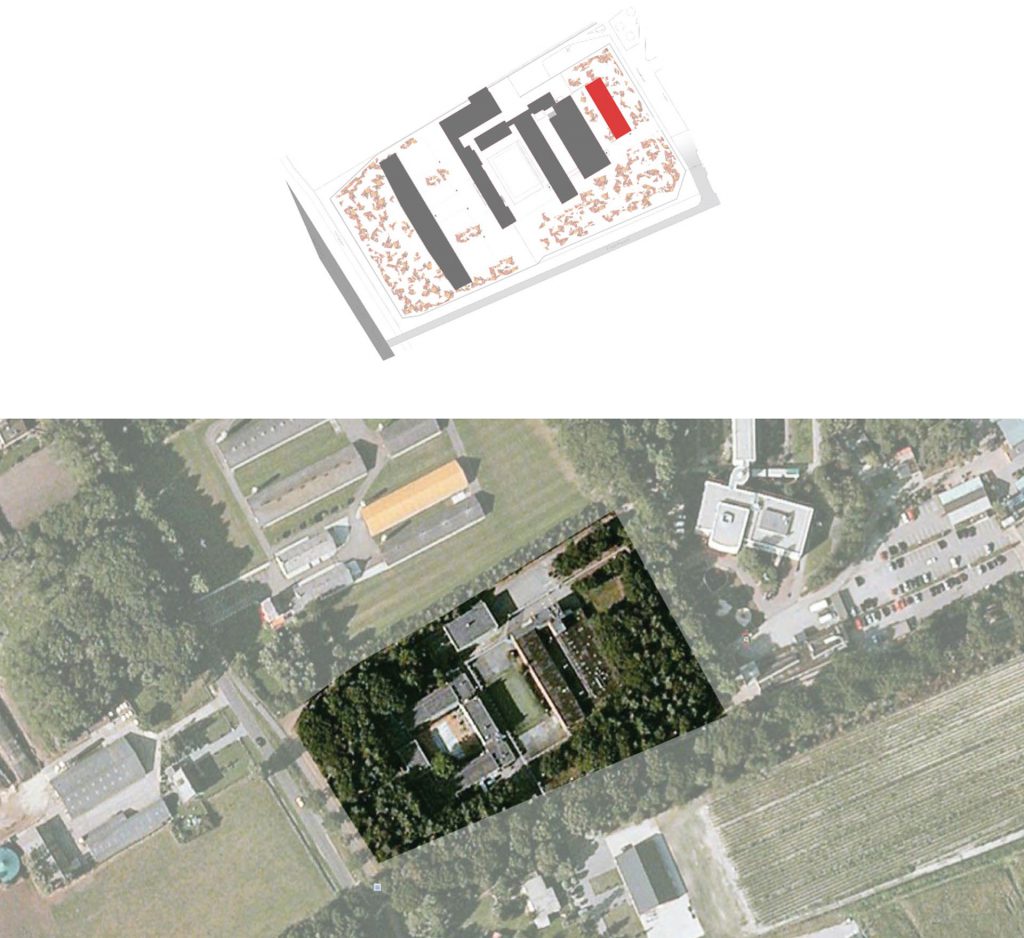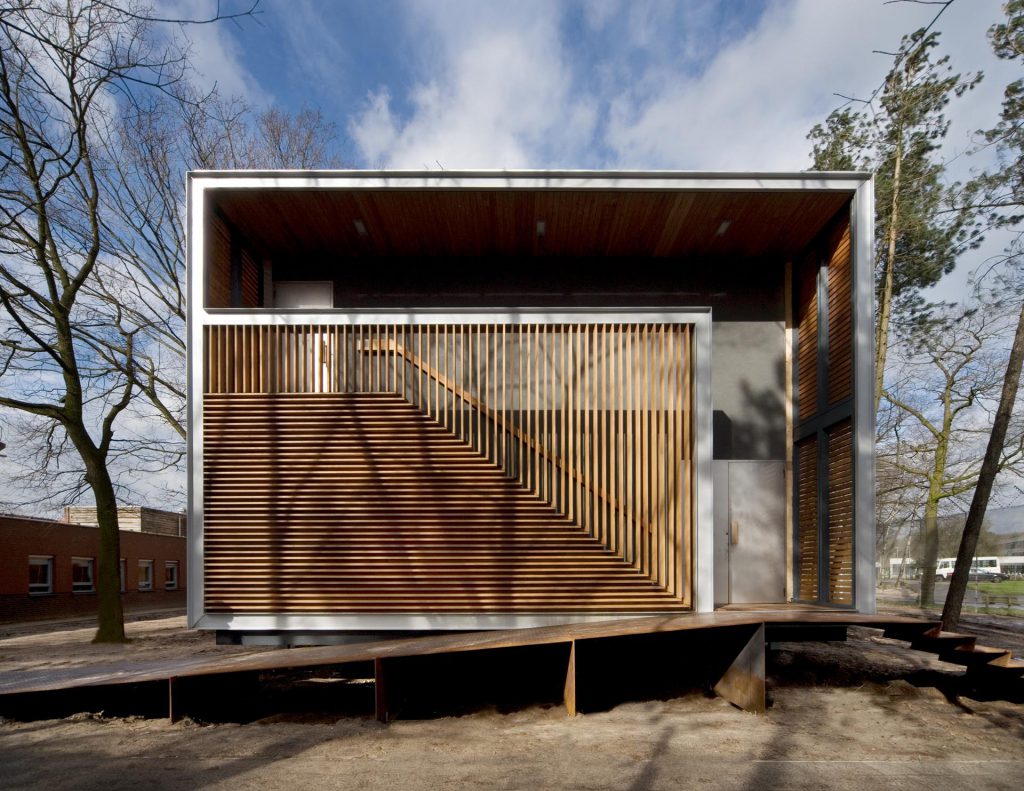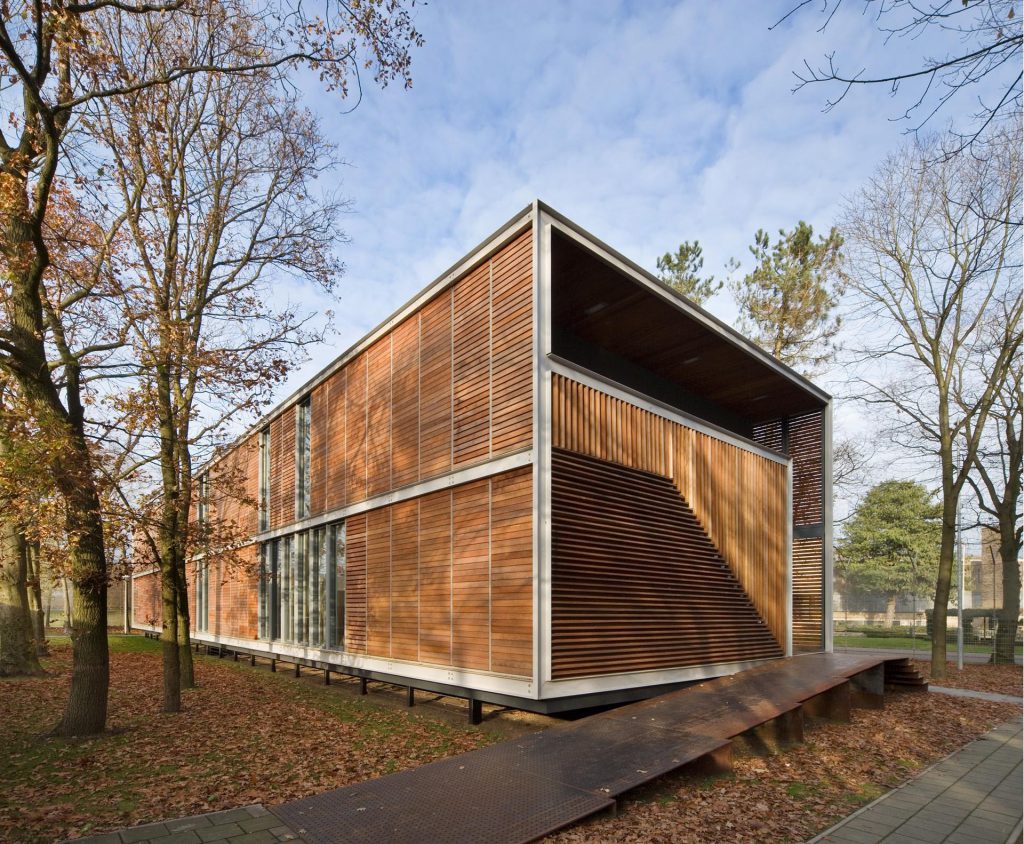Juvenile detention Pavilion, Overloon, Netherlands
Time-out
Unit 6 of “JJI De Hunnerberg, De Maasberg” in Overloon is converted from a prison for adults into an autonomously functioning juvenile detention institution. This is the first prison in the Netherlands where youngsters are treated in small groups of ten instead of twelve. So each youngster gets more treatment and coaching. The buildings are renovated and two new living rooms have been added. A new pavilion for education, visitors and offices is the main part of the masterplan.
Concept
The resoluteness of the world which aims at the interior is partly removed. A new and more intensive interaction with the surrounding nature is aimed at for the youngsters. The open structure stimulates the daily shifts between living, learning and recreation.
The client asked for a building which should help the youngsters to return to society, because the youngsters only stay for a while. It’s a time-out. The design does not express permanency but the opposite: it is an expression of temporality, like the stay of the youngsters.
The concept aims at an open, transparent building between the closed prison and the outside world. Visitors can throw a glance at the prison life and the youngsters can look outside, the society in which they will return later on.
Space and material
By means of the light appearance and the placement of the steel frame on metal feet in the woodland soil, the volume seems to float in the wood. Because of the façade in steel, aluminum and Bankirai the building will be merged in the surrounding woodland scenery, showing different shades of grey. For the flexibility at future changes in the program and treatment, the construction is situated in the side façades, the service pipes have been integrated centrally and the side façades are composed of elements which can be changed modularly.
The classrooms on the first floor and the visiting room and offices on the ground floor are functioning separately from each other by means of the two outside stairs. At the entrance of the visiting room there is a hall in which both functions are in contact with each other, dramatizing the moment of the meeting between the youngsters and the visitors.
Relation youngster – environment
The building does not assume a relation of vandalism and destruction between youngsters and environment. It assumes a relation of respect. It is fragile and sensitive and tries to create a new relation between youngster and environment.
The appearance and the rhythmic of the carefully detailed elements of the façade assume a respectful dialogue between environment and the youngsters. Maybe the youngsters can find a new structure, which they need to proceed their way.
